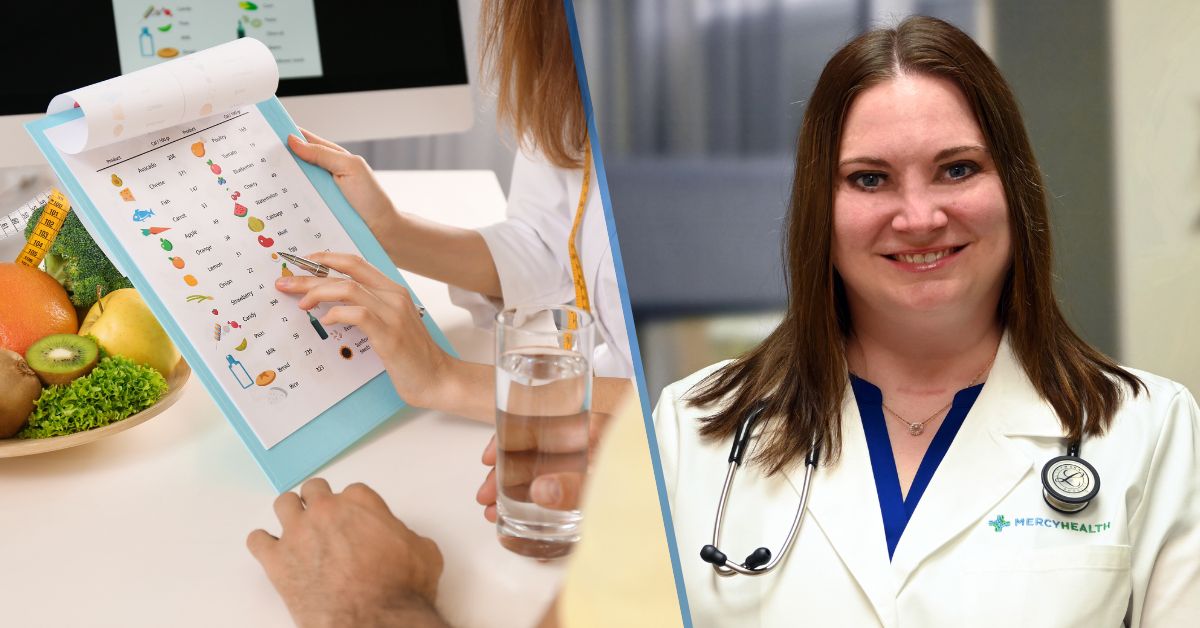Are you concerned about whether or not you have diabetes?
“The problem with diabetes is that it’s insidious and subtle,” Brian Stevens, an PA-C practicing in endocrinology, shares.
So, how do people with diabetes ensure they’re on the right track? Understanding diabetes and how it affects your body is important for creating a new, healthier lifestyle.
Brian is here to answer questions and unpack the information patients want to know most about diabetes. If you’re concerned that you might have diabetes, make an appointment with your primary care provider.
What exactly is diabetes?
Diabetes is a disease that impacts many different aspects of the body. People with diabetes don’t process carbohydrates correctly, which causes blood glucose to increase. The disease can also cause the cells in your body to be resistant to the effects of insulin.
The cells in the pancreas will produce less insulin over time, the liver may overproduce glucose and the kidneys may reabsorb too much glucose back into the bloodstream. These are just a few of the reasons type 2 diabetics may struggle with glucose control.
If I’m told I’m prediabetic, what does that mean?
Prediabetic means you may be on the way to being diagnosed with diabetes. Diabetes is diagnosed based on blood glucose levels, fasting glucose levels and a blood test called HbA1c. If your HB A1C test comes back with 5.8 to 6.4 percent, it indicates pre-diabetes. A result of 6.5 percent or greater is considered diabetes.
Screening for prediabetes is important so people can make important lifestyle changes to avoid becoming a diabetic. These changes include eliminating the day-to-day sugar intake, reducing the intake of simple carbs – white bread, pasta, white rice, potatoes – and increasing complex carbs – brown rice, sweet potatoes, lentils and whole grain breads. Incorporating three to four days of physical fitness a week is also necessary.
What are symptoms of diabetes to look out for?
People often realize they have diabetes after they’ve had it for a long time – they were asymptomatic. For someone who does experience symptoms, some signs of diabetes are excessive thirst because blood sugar is high and the kidneys must work overtime to get glucose out of the blood, leading to dehydration and dry mouth.
Other symptoms include cloudy vision, which is a sign of high blood sugar and chronic yeast infections or UTIs.
What are the different types of diabetes?
Type 1 diabetes is an autoimmune disease that destroys the pancreatic beta cells that make insulin, causing a complete loss of insulin production over time. Type 1 diabetes used to be referred to as “juvenile diabetes” because it was mainly diagnosed in children.
However, type 1 diabetes is being screened for and diagnosed in adults more often than was previously thought. People with type 1 diabetes are insulin-dependent and will need to continue on insulin for the rest of their lives.
Type 2 diabetes is a chronic metabolic disorder characterized by high blood sugar levels, called hyperglycemia, due to the body’s inability to use insulin effectively or produce enough insulin. For patients with type 2 diabetes, I encourage them to look at their diabetes is a lifelong diagnosis.
Education and lifestyle changes are critical to the management of diabetes. Many patients have changed their diet, started a fitness regimen, lost weight and have come off diabetic medications altogether. However, it’s critical that these patients remain vigilant and not fall into old habits. Maintaining a healthy lifestyle can help control the disease and avoid denial that it is still there.
How does diabetes affect a person’s life?
Diabetes is a chronic illness that patients have to deal with every day of their lives, and it can be costly. The psychological and emotional impact can be hard and sometimes people give up. It’s important to remember that no one is struggling with diabetes alone. I encourage my patients to talk to me if they are feeling frustrated and alone, and I invite them to reach out to family members, a therapist, psychologist or a spiritual advisor.
Thanks to modern technology, there are many new, highly effective medications and continuous monitoring devices that have changed how we manage diabetes. Some of the new medications have positive benefits including lowering A1c, protecting kidney function and promoting weight loss.
Continuous glucose monitors tell patients their glucose every five minutes, reducing the number of fingerstick glucose checks needed throughout the day, which is often four or five. There are also automated insulin delivery systems so patient is no longer have to inject insulin using a needle and syringe or pens four to five times a day.
Who can help me manage my diabetes symptoms?
Primary care providers are normally the first medical professionals to diagnose and treat a patient with with diabetes. Some patients are then referred to an endocrinologist. They see and treat a number of diabetic patients, and are very familiar with medications, monitoring devices and automated insulin delivery systems.
How we can help
Both types of diabetes require patients manage their conditions through medication, dietary and lifestyle changes or a combination of both. If you are noticing any symptoms of prediabetes or diabetes, or if you have the condition and want to improve how you manage it, make an appointment with your primary care provider.
Learn more about our diabetes and endocrinology services at Mercy Health.






